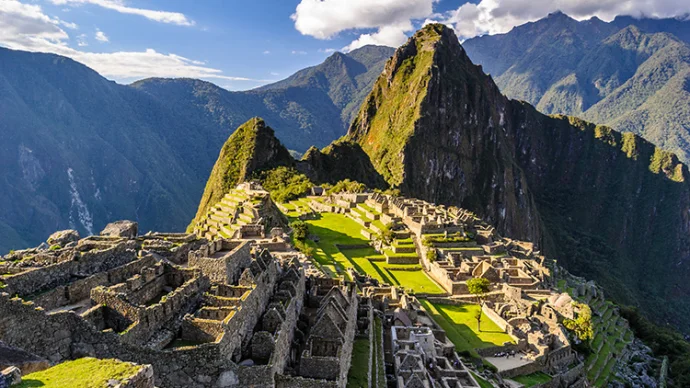
About El Brujo
El Brujo in Peru was a Moche (early Chimu) settlement inhabited between 100 and 700 AD. Now an archaeological site, the main features of El Brjuo are its three “huacas” or sacred pyramid temples.
History of El Brujo
El Brujo has evidence of human habitation dating back to approximately 3000BC, but it’s believed the site really developed between 200 and 600AD – a time known as the Early Intermediate Period.
The best preserved of El Brujo’s trio of temples, thought to have been sites of ceremonial significance, is Huaca Cao Viejo (also known as Huaca Blanca) . The 27m high pyramid is adorned with dramatic, colourful friezes showing various scenes ranging from everyday activities such as fishing to depictions of violence and particularly of human sacrifice.
These friezes have led archaeologists to believe that El Brjuo was probably the site of the torture and execution of prisoners. This theory was further bolstered by the tomb of a woman known as the Señora de Cao, who was buried with a variety of precious objects. This discovery in 2005 was one of the biggest in Peruvian archaeology as it subverted traditional beliefs that the Moche – and other pre-Columbian societies – were male dominated.
Huaca El Brujo is the second most important structure found – also known as the ‘Cut Ruin’ because of the deep cut in its facade made by treasure hunters. Some think this Huaca was used as an administrative centre.
The last huaca is Huaca Prieta, which is the oldest settlement in the area: it’s been studied extensively by archaeologists and in all honesty it’s much more interesting to archaeologists than general visitors.
No one knows why the site was abandoned – it’s thought a combination of political instability and extreme climate events led to its abandonment.
El Brujo today
The site is impressive, and the new museum – Museo de Cao – next to the site is an added bonus. It displays the mummified remains of the Señora de Cao along with many of the finds excavated alongside her. There’s also CGI replica imagery of what she might have looked like.
There are still a number of local residents – the site is believed to radiate positive energy and shamans come here to perform rituals. Some residents will give guided tours of the site in exchange for a few pesos.
Huaca Prieta offers great views over the coastal area and is worth visiting for this reason alone.
Getting to El Brujo
The site is on the west coast of Peru, about 60km north of Trujillo. It’s easiest to get here by guided tour: otherwise, you’ll need to catch a bus / colectivo to Magdalena de Cao, and find a mototaxi to take you to the site itself – make sure you arrange for them to wait for you or you’ll have a terrible trying to get back. Look for buses from Trujillo bound for Chocope.
Featured In

Peru Historic Sites
From the heights of Machu Picchu to the immense reaches of the Nazca Lines and more, here is our ultimate guide to the top Peruvian cultural locations, landmarks and monuments.



















